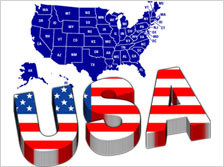US drug hunger drives violence across North, South America
 Washington - The United States has spent 6 billion dollars in recent years boosting just one Latin American country's campaign to stamp out coca bush crops and cocaine laboratories.
Washington - The United States has spent 6 billion dollars in recent years boosting just one Latin American country's campaign to stamp out coca bush crops and cocaine laboratories.
But the US-backed deployment of airplanes and troops across the region - to Colombia, in this instance - has boomeranged.
Latin American leaders are increasingly questioning why the US - the world's largest cocaine market - can't heal itself and cut down on demand. An estimated one-third to half of the global production, or up to 400 metric tons, is snorted or smoked in the US.
"There must be a principle of shared responsibility," said Colombian Foreign Minister Jaime Bermudez.
The US cocaine epidemic began in the 1960s and peaked with an estimated 10.5 million users in 1982. By 1997, that figure had fallen to an estimated 4.2 million people, the United Nations Office on Drugs and Crime reported in 1998.
The numbers are climbing again - to about 5.8 million people in the US who reported using cocaine at least once in 2007, according to the UN's 2009 World Drug report.
At the same time, the drug has become harder to get. Global production dropped 15 per cent in 2008. Usage among US teenagers and the workforce has dropped, and emergency room trips caused by cocaine abuse declined in most cities.
Nonetheless, the administration of President Barack Obama admits that the country's not doing enough.
"Clearly, what we've been doing has not worked," Secretary of State Hillary Rodham Clinton said earlier this year. "Our insatiable demand for illegal drugs fuels the drug trade."
Paring back on demand for cocaine means spending more money on education, clinics and detox facilities - money that is hard to come by in the recession and lacks the sort of political clout that big seizures and mammoth arrests represent.
And while the Obama administration has indicated its intention to shift the battle against drugs from heavy emphasis on law enforcement to more efforts in reducing demand, Washington's record has been far from stellar.
Criminal enforcement still claims the lion's share of the amount spent on fighting drugs: In 2009, interdiction and arrests cost nearly two-thirds of the 14.8 billion dollars spent on the fight; the remaining third went to clinics, education and detox.
That was the status after eight years of the administration of former president George W Bush, which increased funding by 64 per cent for criminal enforcement for cocaine and other illicit drugs, but by only 9 per cent for rehabilitation, treatment in prisons and education, according to Carnevale Associates, a Washington-based research and policy analysis firm.
"The Bush administration talked about treatment, but largely focused on the supply side," said Bill Piper of the Drug Policy Alliance.
While the new administration's rhetoric has "put the demand more front and centre," there's little evidence of change, he conceded. The Obama administration's 2010 drug control budget, drafted by holdovers from the Bush administration, has done "nothing to shift the ratio from the supply side to demand," Piper admitted.
Nonetheless, there's some evidence that cocaine is more difficult to come by in the US these days.
One measure is the price of cocaine, Special Agent Joseph M Arabit of the Drug Enforcement Administration (DEA) told Congress this year. From January 2007 to December 2008, the price per gram of cocaine increased 104.5 per cent to 199.60 dollars.
Oddly, users paid double the price for an ever watered-down cocaine product. Purity declined from 67.2 to 43.9 per cent over the same period, Arabit noted.
While this may seem like a win-win situation for dealers, reducing purity, or "cutting," is a sign of desperation, according to Barbara Wetherell of the DEA.
Cocaine's declining availability has various reasons. The strident military crackdown on trafficking by the president of neighbouring Mexico, Felipe Calderon, has had an "unparalleled positive impact on the US drug market," Arabit said.
Increasing cocaine demand in Europe over the past decade has also been a factor. Europe is the second-largest cocaine market in the world, with an estimated 4.6 million people having used the drug in 2007, according to the UN.
Higher European wholesale prices, ready access to West Africa as a transit point and the declining US dollar could also be driving cocaine into Europe, the US Justice Department and other experts say.
In addition, the disruptive violence within the Mexican cartels that has claimed more than 9,000 lives since early 2008 has reduced trafficking, as has coca bush eradication in South America.
In any discussion of cocaine and other drugs, the debate about the benefits of legalization crops up.
People like Tim Lynch of the libertarian Cato Institute believe that removing drugs from the black market would reduce crime and violence. He points to Portugal, whose recent decriminalization efforts have not led to the increased youth drug use or "drug tourism" that critics predicted.
But the UN argues that drugs must stay illegal to prevent developing countries from being plagued by street drugs the way many have been plagued by alcohol and tobacco. (dpa)